By Darrell Senneke and Chris Tabaka DVM, of the World Chelonian Trust
From the World Chelonian Trust website at http://www.chelonia.org
This care sheet is intended only to cover the general care of this species. Further research to best develop a maintenance plan for whichever species/subspecies you are caring for is essential.
The Malayan Box turtle (Cuora amboinensis), commonly referred to as the “Ambo”, is at this time (Sept., 2002) the most common hard-shelled chelonian species found in the food/medicinal markets of Southern China. It was only a few years ago that this distinction applied to the Reeve’s turtle (Chinemys reevesii) but as over-collection took its toll on that species, this one took its’ place. The overwhelming numbers of Ambos in the food/medicinal markets tends to reflect their availability for captive management as only a few animals out of the tens of thousands destined for that fate are diverted to the much smaller foreign and domestic pet trade. In this case, due to the scale of the trade in the species, even that miniscule percentage is reflected by the common appearance of this species in pet stores. A typical adult is usually about 20 cm (8 inches) in length but there are exceptionally large specimens that can reach 30 cm (12 inches). If at all possible, a captive born specimen should be sought out rather than an animal from the wild as the specimens originating in the food markets are without exception very heavily stressed, parisitized, dehydrated, and in need of immediate medical care by a veterinarian familiar with Asian market chelonia. After adding in the medical bills to the initial cost of the animal, a captive born specimen will be much less expensive. Unfortunately at this time, very few captive bred Cuora amboinensis are being reproduced.
There are four subspecies of Cuora amboinensis but the basic care for each of these is identical. It is the long running curse of the Malayan Box turtle that the term “Box” is a part of its common name. This distinction alone has probably caused more stress on freshly imported and thus dehydrated turtles of this species than any other. Ambos have a hinge; hence it is called a “box” turtle much like our own Terrapene species (as well as many of the other Southern Asia species that also possess hinges). Because of this term, many keepers set these up as terrestrial animals. This is a major mistake, particularly with dehydrated and parasitized fresh imports. Cuora amboinensis is a HIGHLY aquatic species and should be set up with the same type of accommodations one provides other aquatic species. If this species must be thought of and compared to another hinged species, the best example is the Mud turtles (Kinosternon) which also possess a hinge and are much more aquatic than Terrapene, the American box turtle.
Housing Malayan Box Turtles Indoors
Ambos are most accurately termed a “semi-aquatic” species. In the wild, they tend to spend most of their time in the water but are known to move about and eat on land as well. Hatchlings are almost totally aquatic, leaving the water primarily to bask. As they age, they become slightly more terrestrial but are never found far from (and seldom out of) the water. In captivity, they are generally treated as an aquatic species and adapt well to large aquarium management. The most useful form of indoor accommodation for Malayan box turtles is a very large aquarium or a small child’s swimming pool. While they are completely at home in water, they are fairly poor swimmers as compared to a typical aquatic turtle species. I would suggest a water depth of 2 inches (5 cm) or less for a hatchling to allow them to “stand” on the bottom and reach the surface to breath without difficulty. This can be increased as the animal grows but one should always provide resting areas/shallows where the water should be no deeper than the length of the shell. If this type of arrangement is used an area should be built up in one end of the habitat to provide a dry basking area.
What we use for most other hatchling aquatic species is an undecorated “slant tank”. A sweaterbox measuring about 60 cm by 40 cm (24 inches by 16 inches) is propped up on one end to provide a slanted bottom, resulting in a water depth at the lowest end of 5 cm (2 inches) and a dry area at the shallow end. As this is undecorated it is easily cleaned on a frequent basis. A PVC valve can be easily installed in one end to allow for easier draining and cleaning. The addition of live or plastic water plants add to the sense of security for the animals and in the case of live plants may provide an additional food source. As the animal grows the size of this habitat and depth of water should be increased.
At 6 cm (2.5 inches) or so, Malayan Box turtles can be moved out of this arrangement and into a proper aquarium. A reasonable size aquarium for an Ambo of this size is a 20 gallon: 75 cm by 30 cm (30 inches by 12 inches). As the animal grows the size of this habitat should be increased. A water depth of 20 cm up to 25 cm (8 inches to 10 inches) would be fine for turtles between 6 cm (2.5 inches) and the typical adult size of 20 cm (8 inches)
Water quality is very important. Because of the shallowness of the water in a “slant tank” filtration may not be practical. In this event frequent water changes are a must. For larger or adult Cuora amboinensis, we advise canister filters as they are easily cleaned and provide for excellent water quality. Many problems with aquatic turtles can be avoided if one spends a little time and money designing and purchasing an adequate filtration system for your pets. While healthy Ambos are extremely hardy and tolerant of adverse conditions, they should still be provided with the best conditions possible. There are many chronically ill animals that are not properly “cleaned up” and which can regress/ have repeated problems due to even temporary sub-standard conditions.
As this species originates from the tropics, water temperature should be maintained in the 75 – 80 degree F range (25 – 28 C). Malayan Box turtles eagerly bask – often being seen on logs or rocks in nature. To provide a basking site in an artificial setup, a hardware store reflector clip light lamp should be positioned over the dry end of the environment. This should be positioned at a height to provide a basking spot of 90 degrees F or so (32 degrees C) in that section of the habitat. The habitat should also be equipped with a full spectrum fluorescent light to provide for UVB. A UVB source is necessary for Vitamin D3 synthesis (needed in calcium metabolism). If preferred to this lighting arrangement a Mercury vapor bulb may be used that fulfills all requirements.
The authors prefer tanks without substrate in the aquatic area as they are more easily maintained. In the land area of large habitats, cypress mulch as a substrate works well. They like to burrow and need the humidity for their shells. If a substrate is used, care should be taken to avoid any type of gravel that can easily be ingested by the turtles, as they are prone to this type of behavior, especially in the case of white or pea gravel.
Diet
Malayan Box turtle hatchlings take rapidly to many offered foods. Be careful not to overfeed them or growth deformities will result. We recommend only feeding lightly once every day or a little more every other day for rapidly growing hatchlings. Hatchling ambos are very carnivorous and will eagerly consume insects, worms, and fish but will also consume some greens. Earthworms are a particular favorite. If feeding fish - live fish is best; plus the pursuit of live fish provides exercise and mental stimulation. Any aquatic vegetation such as duckweed will also be appreciated not only for it’s cover but also for snacking. As they age, they tend to eat a higher percentage of vegetation. Many of the commercially prepared turtle diets as well as Koi or Catfish foods which have a bit higher protein than some of the others seem to work well with this species and can be considered appropriate Malayan Box turtle food along with varied supplementation (greens, fruits, insects).
Additional calcium supplementation is essential if not feeding a whole prey diet. Powdered calcium can be sprinkled on all foods. It is suggested that one use calcium supplemented with vitamin D3 if the animal is being maintained indoors and calcium without D3 if it is outdoors. If feeding LIVE fish and/or whole prey like adult rodents, calcium and vitamins will be largely taken care of already. Provision of a cuttlefish bone, which can be gnawed if desired, is also recommended. Addition of multivitamins if a commercially prepared turtle diet is NOT used is essential for a number of processes including proper fat metabolism. The freezing process for fish destroys the vitamin E and thiamin, which is an important component for maintaining a healthy Ambo. If feeding frozen fish the keeper will need to add a vitamin supplement to provide these.
Outdoor Housing
Once your turtle is over 7.5 cm (3 inches) in size, predator-proof outdoor habitats offer many advantages over indoor accommodations and should be seriously considered as an option. A child’s wading pool sunk into the ground in a secure enclosure makes for a serviceable outdoor habitat. Larger ponds with advanced filtration can be used to provide a spectacular outdoor home for your Cuora amboinensis. In a pond environment, they do well even with deep swim areas up to 50 cm (18 inches) deep. They should be provided rocks along the side of their “pool” at varying heights to allow them to easily clamber in and out of the water. Outdoor ponds should be sunk into the ground to avoid wide temperature fluctuations. An enclosure of about 50% water and 50% land suits this species well. They eat best in the water with commercial pellets or other foods presented there. In an outdoor habitat, provision should be made for basking as well as a fairly large egg laying area as this species, when in prime condition, lays multiple clutches annually.
Medical
The problems most commonly associated with wild caught / imported Cuora amboinensis are:
· Diarrhea caused by Amoebiasis, particularly Entamoeba invadens
· Septicemia from trauma as well as secondary problems from Entamoeba
· Shell rot (SCUD)
· Starvation and dehydration in fresh wild caught animals
Cuora amboinensis do NOT hibernate; in non-tropical areas provision must be made to provide them with a warm indoor habitation during periods cool or cold weather.
Another notable problem in this species can be found in adult breeding groups of amboinensis. Adult males are almost invariably aggressive in terms of their breeding tendencies. They will literally tear at the female's neck during courtship / breeding and if left unchecked and unseparated, can cause some serious cervical skin and muscle lesions. Separation of the sexes, numerous hiding places, and spacious accommodations are important for successful breeding.
It should be noted that turtle and tortoise care research is ongoing. As new information becomes available we share this on the World Chelonian Trust web site at http://www.chelonia.org/. Serious keepers find it to be a benefit to have the support of others who keep these species. Care is discussed in our free online email community, which may be joined from the web address above. Please contact us about the many benefits of becoming a member of the World Chelonian Trust.
World Chelonian Trust
PO Box 1445
Vacaville, CA
95696
Monday 17 August 2009
Subscribe to:
Post Comments (Atom)




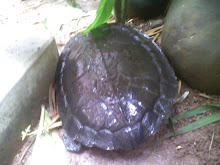


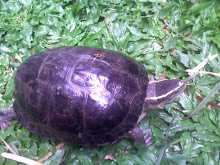









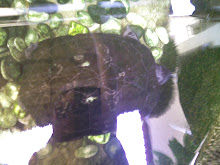














.jpg)
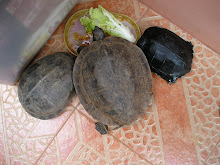
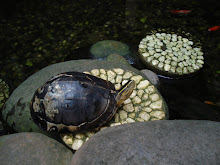+085.jpg)




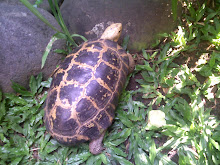
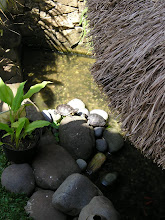.jpg)
No comments:
Post a Comment